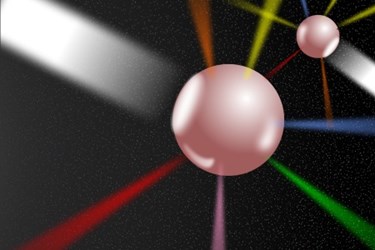New Nanoparticle Works With Six Types Of Medical Imaging

Scientists have developed a nanoparticle that is compatible with six different kinds of biomedical imaging tests, which could lead to a more comprehensive diagnostic image than any existing machine can currently produce. If the technology is safe, it could reduce the number of tests necessary for clinical diagnosis.
The University of Buffalo News Center (UBNC) reports that the project is a collaboration between University of Buffalo (UB) scientists and an international team of researchers. They worked together to develop an upconversion core made out of ytterbium, sodium, fluorine, yttrium, and thulium that is wrapped in a porphyrin-phospholipid (PoP) coating.
According to the study published in Advanced Materials, the core responds well to computed tomography (CT) scans and upconversion imaging. The PoP coating is ideally suited for fluorescence and photoacoustic imaging. Additionally, this layer attracts copper, which is necessary to conduct positron emission tomography (PET) scanning and Cerenkov luminescence imaging.
Jonathan Lovell, an associate professor of biomedical engineering at UB, told UBMC: “This nanoparticle may open the door for new ‘hypermodal’ imaging systems that allow a lot of new information to be obtained using just one contrast agent.”
He goes on to explain that one scan with one machine could potentially eliminate the necessity of multiple scans and multiple machines. Although a machine capable of producing the single image does not yet exist, Lovell expressed hopes that his team’s discoveries could launch further technological research.
Not only could these developments serve to make diagnostics more efficient, they could also potentially reduce a patient’s risk of toxicity that can result from overexposure to nuclear medicine.
In 2010, the FDA launched an initiative that sought to curb unnecessary exposure to radiation through a variety of different strategies.
According to the FDA, “Because ionizing radiation can cause damage to DNA, exposure can increase a person’s lifetime risk of developing cancer. Although the risk to an individual from a single exam may not itself be large, millions of exams are performed each year, making radiation exposure from medical imaging an important health issue.”
While further safety testing for UB’s nanoparticle will be necessary, Paras Prsasad, executive director of UB’s Institute for Lasers, Photonics, and Biophotonics, pointed out that the nanoparticle was not developed using toxic metals like cadmium, a material that exists in some currently used nanoparticles.
Image Credit: Jonathan Lovell
